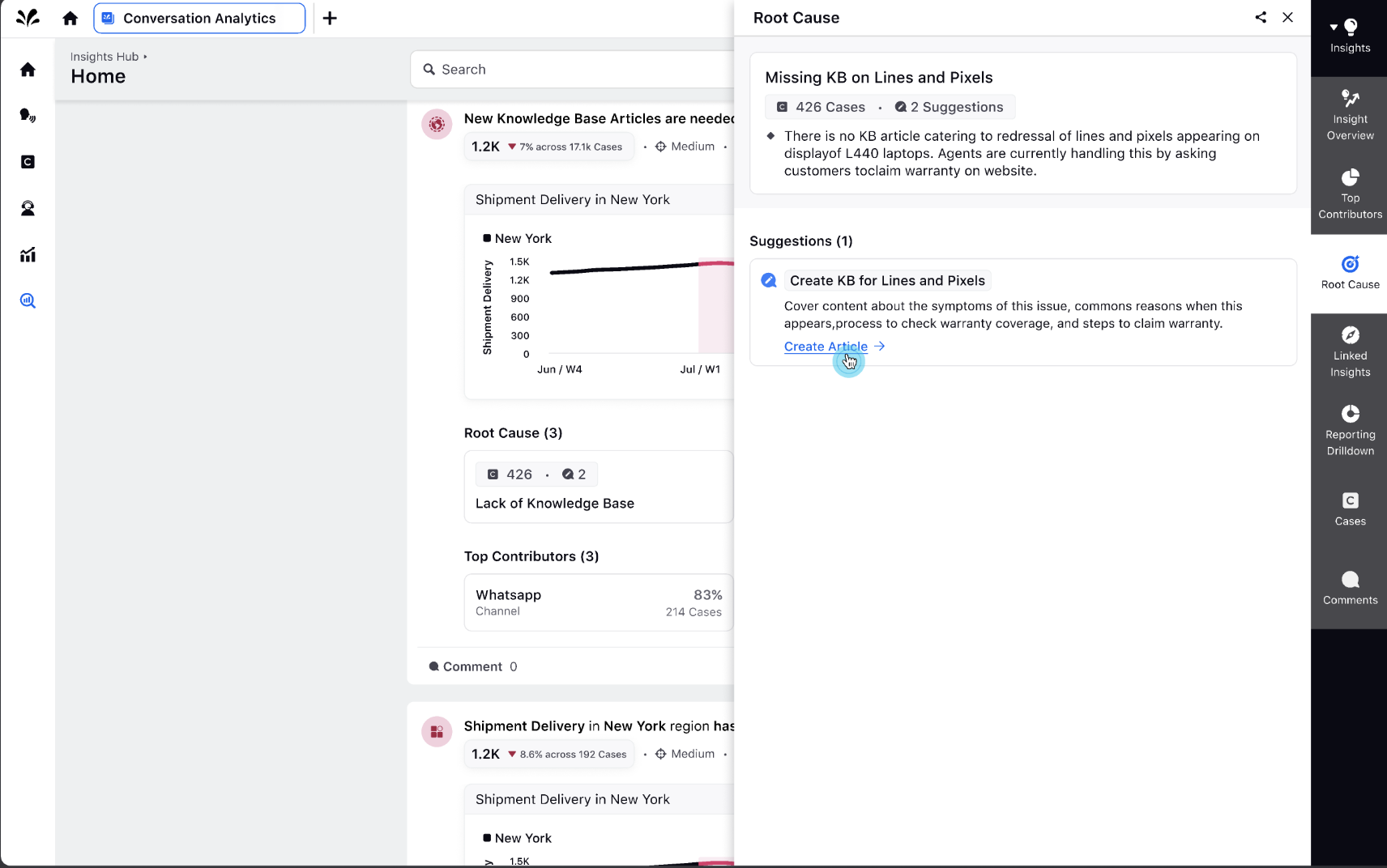How are Knowledge Base Insights Generated?
Updated
Knowledge Base Insights are generated through a multi-step process aimed at identifying areas where new articles should be created or existing articles should be updated based on customer cases. Here's a detailed explanation of each step:
Step 1: Identify Question-Answer Pairs
- Each article within the selected category is analyzed to identify the question-answer pairs it addresses.
- This involves understanding the specific queries that customers might have and the corresponding answers provided by the article.
Step 2: Perform Case Analysis
- Granular analysis is conducted for individual customer cases to comprehend the unique issues they encountered.
- The focus is on understanding the specific challenges or problems faced by customers in each case.
Step 3: Identification of Question-Answer Pairs for Each Case
- For each customer case, the relevant question-answer pairs are identified. This step involves extracting the specific questions asked by the customer and the corresponding answers provided to address their concerns.
Step 4: Cluster Similar Question-Answer Pairs
- Question-answer pairs that are similar across multiple cases are clustered together.
- This clustering process helps identify common themes or recurring issues faced by customers.
Step 5: Compare with Existing KB Articles
- The question-answer pairs identified from the grouped cases are compared with the question-answer pairs from existing KB articles.
- If no similar KB article is found for a particular group of cases, a recommendation is made to create a new article to address the uncovered queries.

- For groups of cases where similar articles are found but specific question-answer pairs are not addressed, a recommendation is made to update the existing articles with relevant information.

In summary, Knowledge Base Insights are generated by analyzing customer cases, identifying common issues, mapping them to existing KB articles, and suggesting actions to either create new articles or update existing ones to better address customer queries and improve overall support effectiveness.